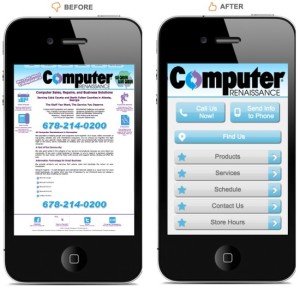 When consumers search for local options on mobile, they usually have an immediate need and want quick answers, close to where they are. Optimizing for local search is important, but if you aren’t optimizing for mobile, you may miss out on your best source of local traffic. Many of those local searches come with a high purchase intent, making local mobile searches an incredibly important opportunity for your business. How can you structure your paid search campaigns to make sure your ads are appearing for local shoppers who want what you’re selling?
When consumers search for local options on mobile, they usually have an immediate need and want quick answers, close to where they are. Optimizing for local search is important, but if you aren’t optimizing for mobile, you may miss out on your best source of local traffic. Many of those local searches come with a high purchase intent, making local mobile searches an incredibly important opportunity for your business. How can you structure your paid search campaigns to make sure your ads are appearing for local shoppers who want what you’re selling?
Use shorter phrases and keywords
Mobile users use short phrases and fewer keywords than desktop users. Go after short, concise phrases and keywords that your audience will be typing into their phones. For paid search ads, you can find mobile-specific keyword information by checking the Search Terms report in Google AdWords. This list will give you the searches people entered that triggered your ads.
Keep it local
Local searchers will be more likely to respond to ads from businesses that appear to be close to them. Clearly, state your city in your title and content to confirm that you are a local business. Break out your paid search campaigns according to the location to ensure that the location a potential customer is searching for shows up in your content. When searchers know you’re just down the street, your ad will be much more relevant to their query.
Use mobile ad extensions
Ad extensions can boost your ads by providing additional information to searchers. Experiment with different extensions and see which ones are the most effective. For mobile search, consider the following extensions:
- Location extensions: Location extensions shows your address and lets searchers know just how local you are.
- Call Extensions: If people often contact your business before they come in, you can eliminate a step for them by making the click on your ad lead to a call or text.
- Sitelinks: Sitelink extensions let you focus on some of your site specifics that make your business stand out, like driving directions, special promotions, or a “contact us” page.
Test Local Search Ads on Google Maps
Local Search Ads or Promoted Pins increase the accessibility and visibility of your business for local searches by putting your ad right on Google’s Map. You can use this ad to feature promotions, incentives, and allow potential customers to search your real-time inventory before they head to your store.
Implement the right mix
Successful mobile advertising needs to be the right combination of keywords to fit Google’s algorithm paired with a great user experience to engage customers. When you create the right mix of keywords and relevant content, your message will reach your ready-to-buy audience. If you’re interested in learning more about mobile advertising contact us today.
 Google recently announced that it is revamping its indexing criteria to better align with smartphone users.
Google recently announced that it is revamping its indexing criteria to better align with smartphone users.  The more personalized an ad is to its audience, the greater chance it will drive a consumer to act.
The more personalized an ad is to its audience, the greater chance it will drive a consumer to act.  These ads:
These ads: Five recent statistics confirm what we already know: mobile is growing and it’s necessary to reach your audience on this platform. After each key statistic, we’ve highlighted an action point suggesting what you should include in your marketing strategy to capitalize off of mobile consumer behavior.
Five recent statistics confirm what we already know: mobile is growing and it’s necessary to reach your audience on this platform. After each key statistic, we’ve highlighted an action point suggesting what you should include in your marketing strategy to capitalize off of mobile consumer behavior.




